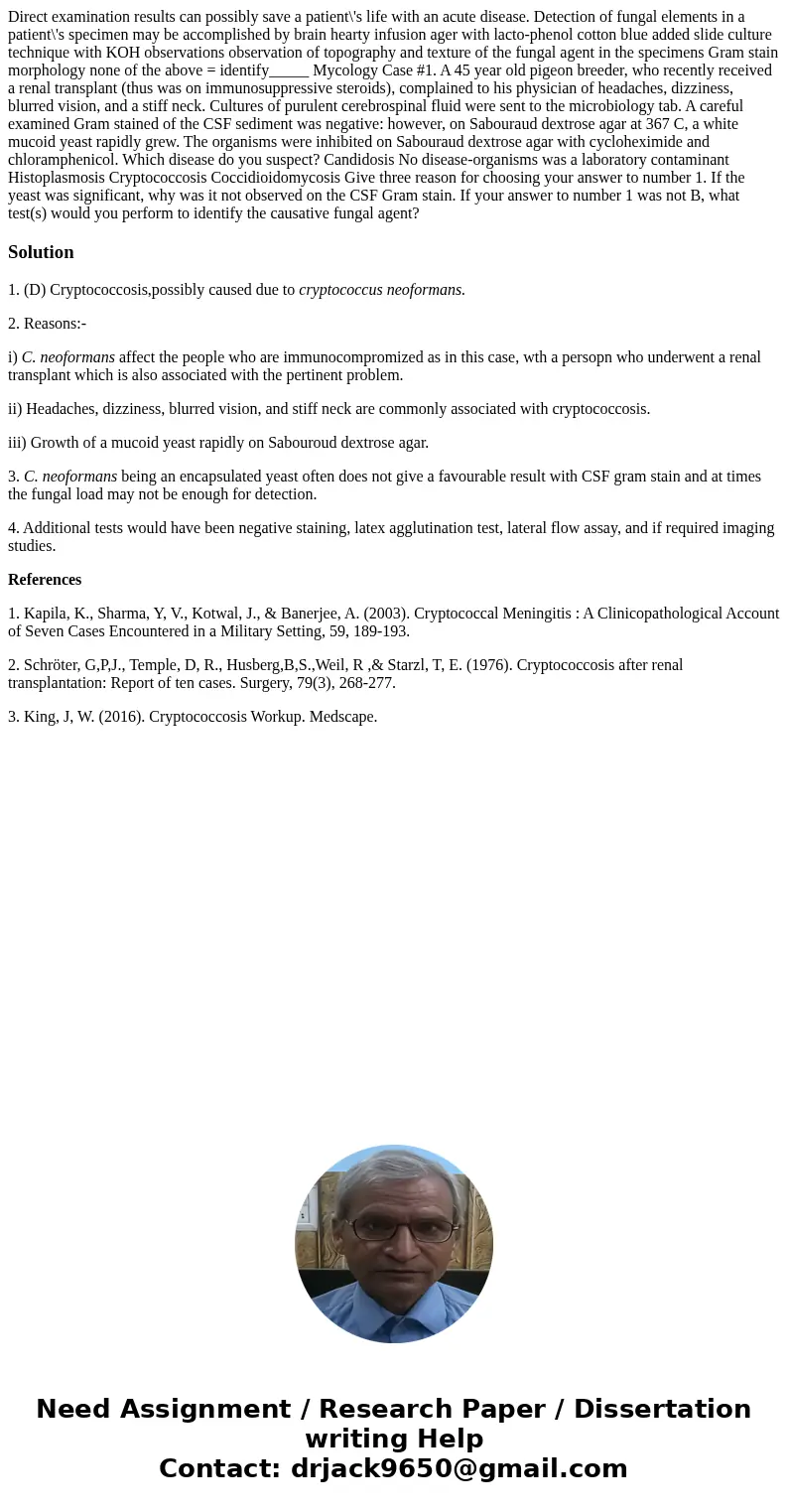Direct examination results can possibly save a patient\'s life with an acute disease. Detection of fungal elements in a patient\'s specimen may be accomplished by brain hearty infusion ager with lacto-phenol cotton blue added slide culture technique with KOH observations observation of topography and texture of the fungal agent in the specimens Gram stain morphology none of the above = identify_____ Mycology Case #1. A 45 year old pigeon breeder, who recently received a renal transplant (thus was on immunosuppressive steroids), complained to his physician of headaches, dizziness, blurred vision, and a stiff neck. Cultures of purulent cerebrospinal fluid were sent to the microbiology tab. A careful examined Gram stained of the CSF sediment was negative: however, on Sabouraud dextrose agar at 367 C, a white mucoid yeast rapidly grew. The organisms were inhibited on Sabouraud dextrose agar with cycloheximide and chloramphenicol. Which disease do you suspect? Candidosis No disease-organisms was a laboratory contaminant Histoplasmosis Cryptococcosis Coccidioidomycosis Give three reason for choosing your answer to number 1. If the yeast was significant, why was it not observed on the CSF Gram stain. If your answer to number 1 was not B, what test(s) would you perform to identify the causative fungal agent?
1. (D) Cryptococcosis,possibly caused due to cryptococcus neoformans.
2. Reasons:-
i) C. neoformans affect the people who are immunocompromized as in this case, wth a persopn who underwent a renal transplant which is also associated with the pertinent problem.
ii) Headaches, dizziness, blurred vision, and stiff neck are commonly associated with cryptococcosis.
iii) Growth of a mucoid yeast rapidly on Sabouroud dextrose agar.
3. C. neoformans being an encapsulated yeast often does not give a favourable result with CSF gram stain and at times the fungal load may not be enough for detection.
4. Additional tests would have been negative staining, latex agglutination test, lateral flow assay, and if required imaging studies.
References
1. Kapila, K., Sharma, Y, V., Kotwal, J., & Banerjee, A. (2003). Cryptococcal Meningitis : A Clinicopathological Account of Seven Cases Encountered in a Military Setting, 59, 189-193.
2. Schröter, G,P,J., Temple, D, R., Husberg,B,S.,Weil, R ,& Starzl, T, E. (1976). Cryptococcosis after renal transplantation: Report of ten cases. Surgery, 79(3), 268-277.
3. King, J, W. (2016). Cryptococcosis Workup. Medscape.

 Homework Sourse
Homework Sourse